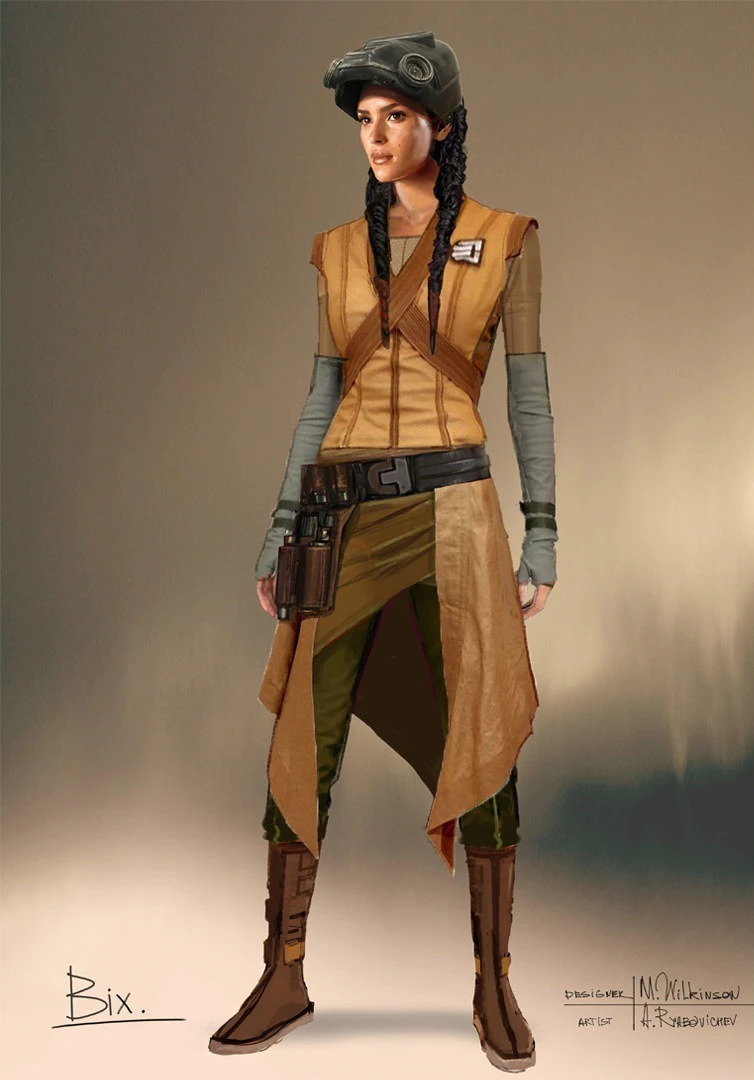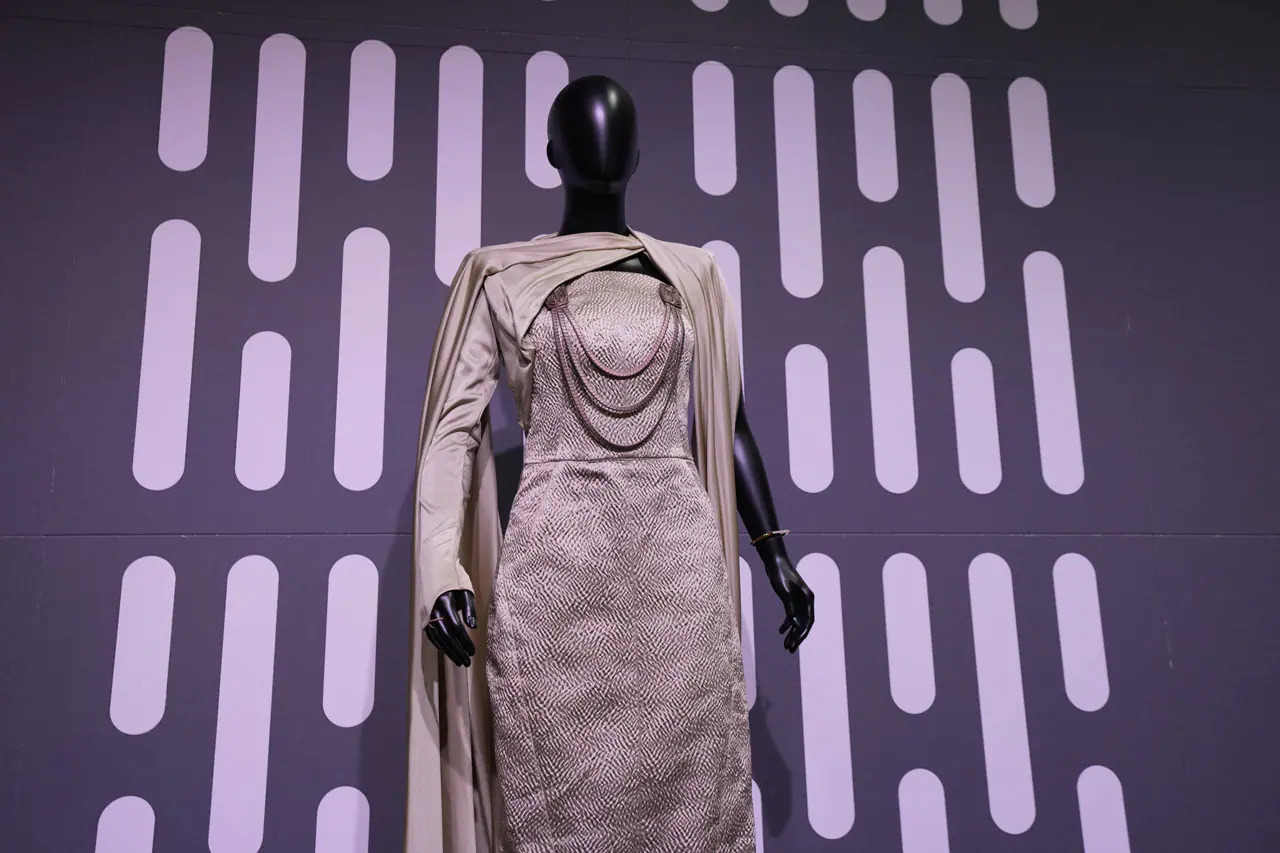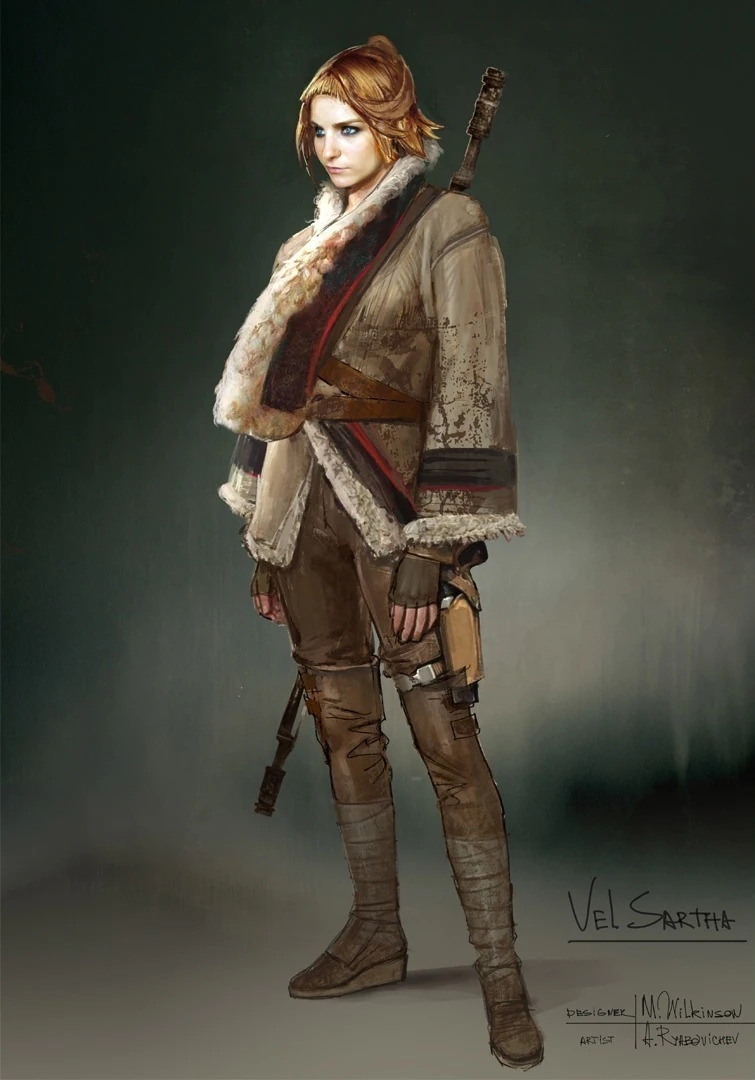Michael Wilkinson was the costume designer for both seasons of the Andor television series. His team designed and fabricated hundreds of costumes for the actors. Wilkinson worked on the costumes for the Ferrix residents, the children living on Kenari, Cassian Andor, Bix Caleen, Maarva Andor, the Daughters of Ferrix, Mon Mothma, Perrin Fertha, Luthen Rael, the Aldhani shepherds, and the Aldhani mission crew.
Michael Wilkinson worked as the costume designer for the first season of the Andor television series. The sense of gaining or working with the costume language of Star Wars excited him about starting the project, and he wanted to offer his own take on the franchise. He said working on the show was thrilling and wonderfully challenging. He liked the richness that was made possible by starting with iconography and the chance to offer his own take on the world. He was interested in how the main characters use their clothes to hide their true selves. He thought that his previous work in films helped him define the different planets in the series. His team was determined to make the costumes very deep with meaning so that the audience would rewatch the show to go deeper. Wilkinson made sure that all of the worlds, civilizations, and backstories would have meaning. The team spent a long time establishing carefully curated palettes of textures and colors for the different planets to make the information clear for the viewers. When they were figuring out how to make the planets different, they thought about each planet's climate and the raw materials they had, which allowed them to think deeply and make the planets seem authentic. Additionally, the team thought about how developed the planet's culture is and what materials they have to make clothes and other things.
Wilkinson was able to view and draw inspiration from a back catalog of costumes from previous productions. He had the challenge of following executive producer Tony Gilroy's specific vision that was very subtle in nuances and included a more detailed, authentic approach to the costumes' story. The team decided that many of the available background costumes were not right for their field, so they launched a huge building process and made many prototypes. For certain background characters, Wilkinson used costumes from previous Star Wars projects, and he then chose which fit the show to tell the story of the place. He found it helpful to add visual clues from the real world and leap off from that. He believed that made the show more relatable and meaningful for viewers.
There were about five different workrooms in the United Kingdom and Europe. The team made their own stock for the different planets. They designed and fabricated hundreds of costumes for the actors, and they clothed over 6,000 crowd people starting from scratch. All of the principal costumes were made in the studio in London, England, while many of the background costumes were made in different workrooms around the UK and Europe before being brought to the studio. Every costume went through an elaborate process of aging and distressing. They were given interesting patinas and age to have an authentic, worn quality. The costumes were then shipped to Scotland where scenes on Aldhani were filmed.
Wilkinson viewed the planet Kenari as being similar to Lord of the Flies with a primitive and feral feel, so he thought that it explained adult Cassian Andor's wildness and rebellion. To reflect the situation of the children living by themselves, Wilkinson envisaged that they crafted their clothing by using natural elements and chopping up and repurposing remnants and cast-off uniforms left behind by their parents. To mix modern industry with organic jungle textures, the kids' costumes were made with a primitive mix of work wear they customized with feathers, beads, trinkets, and elements the kids foraged from the urban environment.
While working on the industrial world of Ferrix, Wilkinson and his team imbued each costume with individualism so that they would reflect the character it was worn by. At the outset, Wilkinson had his team question many unique details to inform the design, such as the character's job, their source of clothing, and how their clothing reflects them and their values. Some of the costumes' silhouettes drew inspiration from Japanese workwear, and the influences were abstracted and modernized. Wilkinson said that having costumes from an authentic and culturally resonant place would give viewers something to connect with. The costume department even created logos and symbols for the various brands, repair shops, and individual businesses, which deepened the lore and tangibility of Ferrix. When creating the Ferrixian clothing, the team chose what they deemed the coolest and most interesting workwear elements between quilting, safety gear, and protective materials. Some of the stand-out characters were given distinguishable silhouettes to help them stand out from a crowd. The costume shop and set designers worked together to create the wall of gloves.

Andrei Riabovitchev created concept art of Bix Caleen based on a design by Michael Wilkinson.
Bix Caleen's costume was designed to reflect her utilitarianism and practicality. Artist created concept art based on Wilkinson's design. Wilkinson's team created a jacket he liked with an iconic neckline. To show that Ferrix is cold, the team added texture, a fleece lining, and a Carhartt-like aesthetic. Wilkinson viewed Maarva Andor as the heart of the entire series. When working on scenes with younger Maarva, Wilkinson's team wanted to evoke how capable she is, and they gave her a big swinging linen duster jacket to give her "pirate swagger." Wilkinson thought that Fiona Shaw, Maarva's actress, looked great in the clothes and carried off so much. Wilkinson's team developed a linen jumpsuit for her, which she loved the idea of. The team liked the idea of Maarva only having small variations of her outfits, giving a soft and slightly defeated quality to her character. Her costume's red jumpsuit was meant to be a nod to the reds worn by the Daughters of Ferrix. During her funeral procession in the finale episode "Daughter of Ferrix," the red was amped up to be a strong symbol of the spirit of Ferrix.
Wilkinson needed Cassian Andor to be able to hide in his clothes but still be compelling, have "some swagger," and be something viewers are drawn to. Wilkinson's idea was that the arc of Andor's costumes started with him hiding in his clothes due to being a mess-up. As the series continued, Andor shed his layers a little bit and his silhouette became more tailored with longer lines, and his shoulders became square. This was meant to show Andor is subtly transforming into the character he is in Rogue One: A Star Wars Story.

Mon Mothma's costume was designed by Michael Wilkinson.
When Wilkinson was working on Mon Mothma's costume, he paid homage to prequel trilogy costume designer Trisha Biggar by styling the senator in flowing robes that evoked her sense of style seen in her deleted scene in Star Wars: Episode III Revenge of the Sith. He knew that Mothma was from Chandrila but stationed on Coruscant, so he thought about people from different countries that work at the United Nations building in New York. The team aimed to bring elements of clothing from her home, so they came up with a set of colors and textures mainly drawn from of the iterations of the character. Wilkinson leaned into pale neutral tones, and he loved the slightly shimmery organic textures that had hints of metals. For scenes in Mothma's embassy, Wilkinson worked on a costume that is a sea of creams, ivories, and oyster tones. Wilkinson was fascinated with how Mothma plays a role to fight for her causes. He designed the look for Perrin Fertha, which Andrei Riabovitchev based concept art off of.
Wilkinson discussed color palettes with production designer Luke Hull, whom he enjoyed working with. When they worked together, Wilkinson talked about the cultures, climate, materials available to build the worlds, interiors, architecture, and clothing. He thought that he and Hull managed to dial that down quite closely. They collaborated on Mothma's embassy. Wilkinson thought the embassy came together very nicely and showed that he and Hull always worked together. The team had to develop two very different looks for Luthen Rael's two personas. Riabovitchev created concept art based on Wilkinson's design for Rael.
Wilkinson wanted the uniforms worn by the Narkina 5 prisoners to have a memorable quality. His team wanted the uniforms to feel disposable to get the sense that they would be worn down for one day, hosed down, and then replaced with a new, fresh uniform the next day. They spent a long time on the costumes because they knew every square inch on them would be visible in the Narkina 5 episodes, and hundreds of men would wear the uniforms. The team wanted a retro and vintage 1970s graphic on the arm, and the orange was meant to make the prisoners easier to spot for the guards. Wilkinson came up with the orange symbols while his team made the uniforms with a fabric and papery material they found. Wilkinson was happy with how the different shapes and sizes of the prisoners unified with the uniform. He was pleased with how the costumes turned out despite them being the hardest costume to design. He thought the uniforms blended into the white walls in an interesting way. When Wilkinson and Hull worked on the scenes in the prison, they became the former's favorite scenes in the show.

Andrei Riabovitchev created concept art of Vel Sartha based on a design by Michael Wilkinson.
When Wilkinson was working on the costumes for the native Aldhani shepherds and the mission crew, he got a sense of how Star Wars is full of many diverse planets. He designed the look for Vel Sartha, the group's leader, and Riabovitchev made concept art based off it. The costumes called for natural fabrics, so Wilkinson made the costumes dark, textural, and organic. The principal characters were fitted and prepped in the London studious. In Scotland, Wilkinson's team worked with many local background performers. A team of people was sent to Scotland to fit and create the background characters, uniforms, and nomadic mountain culture of the Aldhani people. Wilkinson's team fitted a large array of characters for the sequence showing the Aldhani.
Syril Karn's uniform was meant to hint at his fussy nature and desire for order. Karn's suit and tie partially drew inspiration from Jacques Tati films and corporate design from the 1960s. Wilkinson's team came up with using a band of fabric with a specific piece of hardware that is thread through to make it seem like a tie and feel modern. Wilkinson loved the scene in which Karn tells Chief Inspector Hyne he had his uniform tailored. Wilkinson thought the actors were fantastic and the costumes told a lot during the scene. As a reminder of his work, Wilkinson kept his fabric swatch books because they had memories of the almost two years he spent working on Season One.
In July, 2022, Wilkinson's costumes for Cassian Andor and Mon Mothma were on display at the Lucasfilm Pavilion at San Diego Comic Con. In November, 2022, Wilkinson was working on the costumes for Season Two of Andor. He wanted to take things than Season One and make the show more powerful for viewers. His team built from what they learned while working on Season One and tried to continue making the next season compelling and powerful. He worked on designing Andor's new look and evolving Mothma to the leader of the Rebel Alliance.
- Andor — "Kassa"